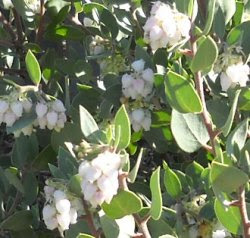
A few more ideas on designing your garden. Many gardeners find plants they like, but don't know how to treat the space so it makes a pleasing whole. A back yard with lots of unrelated plants, all one of a kind, is not that attractive. Similar and contrasting colors, shapes and textures makes a garden interesting. Consider groupings of a plant you like so that you get masses of blooms, for example, at certain times of the years. Groupings of odd numbers are usually preferred in art, and you use this. Rocks, patios, arroyos (dry creeks) can all provide shape and structure to your design.
Repetitions can be a unifying quality in a garden. You can repeat the same color multiple times throughout the garden, and also repeat the same plant species several times. An artist will often draw the eye to a focal point, and repeat colors and shapes to make a pleasing whole. Your garden can be your canvass.
Think of the ocean or a fire: two of the most fascinating things in nature because of the endless repetition and infinite variation. You can use this concept in your garden.
One local person who can help with both landscape design and take you out for a garden wholesale shopping experience is GoodEarth Plantscapes owned by Janet Swanson. Contact her at 805-534-9586. Even if you just want to go to Native Sons (almost entirely a wholesale nursery) she can take you there.
Dudleya britonnii pictured above is one of those plants you aren't likely to be able to buy any place else in Central California except Native Sons. It is native to San Diego and Baja but grows well in sand or clay and needs no summer water. Those flower stems will tower over the plant 3 feet with hundreds (?) of little tube flowers that are very attractive to hummingbirds. The plant, especially the flower stems will take on an increasingly pink or even red color as the days get hotter and dryer. After it stops blooming a few months later, cut off the stems and let the rosette shrink back to a smaller size. It will expand again after the winter rains begin. It sometimes even sprouts a side rosette or two. The above Dudleya split in two last year. This year each of those split in two again. Snails and slugs may eat it in damp weather, so keep an eye out. They are easy to find with a flash light after dark after the first sign of a nibble.














